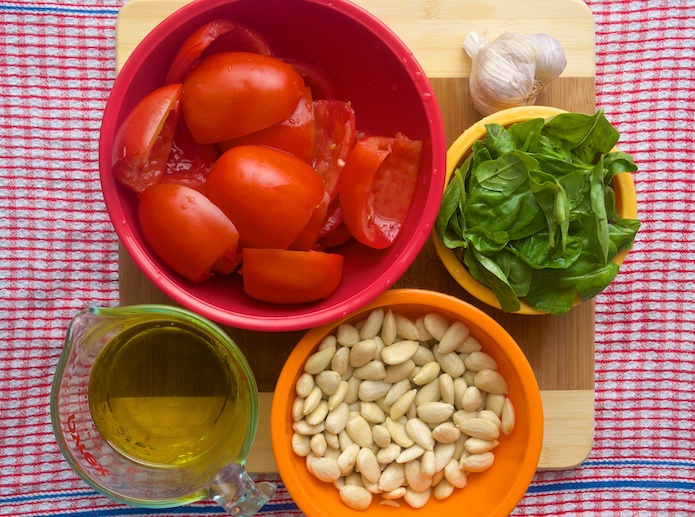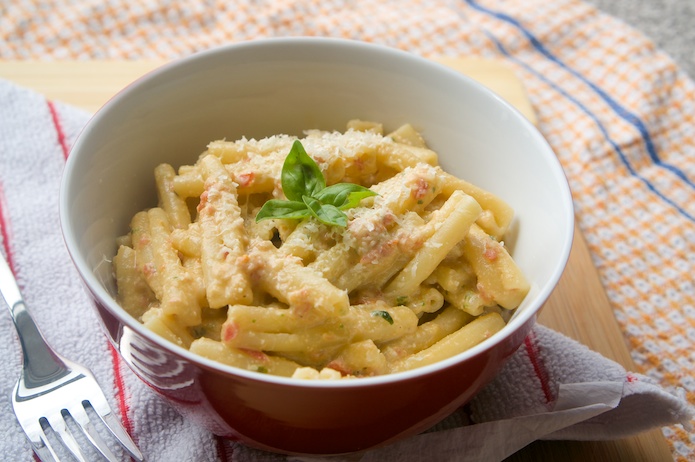Mention the word “pesto” and it conjures up images of the very well-known Pesto alla Genovese, the bright green basil and pine nut condiment from Genoa in the northern parts of Italy. Less known, yet equally as tasty, is its southern cousin – Pesto alla Trapanese, from the fishing town Trapani in the western parts of Sicily. Unlike its Ligurian counterpart, the Trapanese version is formed on a base of tomatoes and almonds, with some basil and garlic thrown in for an added level of flavour. Used as a sauce for pasta, this recipe makes for a great weeknight meal – simple, cheap and incredibly quick to make.
Selecting the appropriate type of pasta for any dish can make a difference to the final product and how enjoyable it is to eat. My preference for this type of sauce is a pasta with lots of grooves to hold the pesto – my favourite being casarecce or something similar (fusilli is great too). However, if you don’t happen to have these in the cupboard, then still go ahead and make this sauce using whatever you have – Pesto alla Trapanese without the ideal pasta shape is better than no Pesto alla Trapenese at all!

Ingredients for Pesto alla Trapanese – ripe tomatoes, fresh basil, garlic, almonds and olive oil
Ingredients (serves 3 to 5)
- 100g skinless almonds
- 30g fresh basil
- 300g ripe tomatoes
- 2 cloves garlic
- 100mL extra virgin olive oil
- Plenty of Pecorino Romano cheese to serve
Preparation
- Bring plenty of water to the boil and salt generously. Add the pasta to the boiling water and stir occasionally to ensure that it doesn’t stick together.
- In the meantime, process the almonds and garlic in a food processor until fine. Add the tomatoes (roughly de-seeded) and basil, and continue processing until the elements are well incorporated.
- Stir through the olive oil by hand until the mixture is well combined. Season with salt and freshly ground black pepper.
- Once the pasta is cooked, drain the water (retain a little bit for the sauce) and stir through some of the pesto. Note that getting the ratio of pesto to pasta is critical; don’t assume that you will need to use all of the pasta and all of the pesto – the pasta should be well-coated in the pesto without swimming in it.
- Add plenty of grated Pecorino Romano cheese (use Parmesan if you can’t find Pecorino Romano, however this sauce benefits from the punchy flavour of Pecorino) and mix well. Add back some of the retained cooking water and mix until the sauce becomes silky and smooth and lubricates the pasta to stop it from sticking.


Leave A Comment